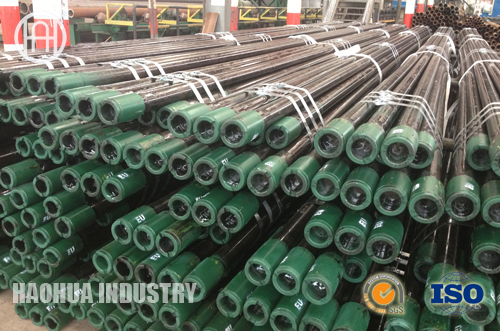Heavy weight drill pipe(HDWP)
Product Categary:
Main Feature:
Heavy weight drill pipe(HDWP) Heavy weight drill pipe has a center upset also known as wear pad that increases tube life by protecting the tube from wearing on the outer diameter by keeping the tube away from the hole wall. It also reduce
product description
Heavy weight drill pipe(HDWP)
Heavy weight drill pipe has a "center upset", also known as wear pad, that increases tube life by protecting the tube from wearing on the outer diameter by keeping the tube away from the hole wall. It also reduces hole drag and differential sticking problems. The walls of heavy weight drill pipe are thicker and have longer upsets compared to conventional drill pipe, as well as being stronger with high tensile strength.
Heavy weight drill pipe has a “center upset”, also known as wear pad, that increases tube life by protecting the tube from wearing on the outer diameter by keeping the tube away from the hole wall. It also reduces hole drag and differential sticking problems. The walls of heavy weight drill pipe are thicker and have longer upsets compared to conventional drill pipe, as well as being stronger with high tensile strength.
Heavy weight drill pipe (HWDP) is usually run in between the drill collars and the drill pipe in order to prevent fatigue of the drill pipe in the vertical drilling industry. Heavy weight drill pipe is also utilized in the horizontal directional drilling (HDD) industry for added strength in high stress situations. Heavy weight drill pipe (HWDP) may be used to make the transition between the drill collars and drill pipe. The function of the HWDP is to provide a flexible transition between the drill collars and the drill pipe.
7 Specification for Rotary Drill Stem Elements
5DP Specification for Drill Pipe
1. Run the necessary number of joints to provide the required weight plus enough more joints to ensure the transition point stays in the heavy weight pipe.
2.Do not run in compression where the hole size is more than 4″ larger than the heavy weight tool joint size.
1. Run a minimum of 18 to 21 joints.
2. Utilize the manufacturer’s recommendations for the maximum drill collar size to be run below the heavy weight.






